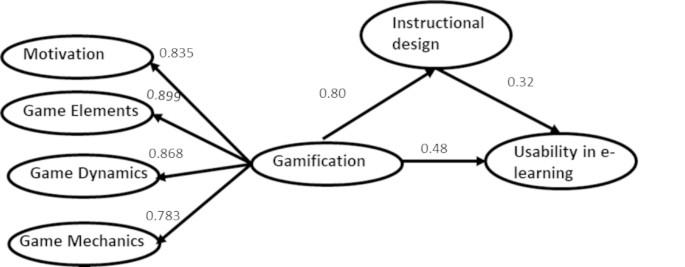Unlocking the Future of Educational Gamification: Trends, Benefits, and Innovations for Learning
Introduction: The Dawn of Educational Gamification
In today’s fast-paced digital landscape, educational gamification has rapidly evolved from a niche concept to a key pillar in modern learning experiences. combining the principles of game design with educational content, gamification introduces dynamic, interactive, and motivating environments that captivate learners of all ages. From elementary classrooms to corporate trainings, schools and organizations are harnessing gamified learning to boost engagement, knowledge retention, and skill development. As we look ahead, fresh trends and breakthrough innovations are transforming the way we perceive and implement educational gamification.
What is Educational Gamification?
Educational gamification refers to the integration of game elements—such as points, badges, leaderboards, challenges, and storytelling—into educational settings.Unlike educational games,which are built solely for learning,gamified education adapts traditional curricula by making them interactive,rewarding,and fun.
- Points and Rewards: Incentivize learners to complete tasks and reach goals.
- Leaderboards: Foster healthy competition and collaboration among students.
- Quests and Challenges: Encourage perseverance and problem-solving.
- Narratives: Immerse learners in story-driven educational journeys.
Emerging Trends in Educational Gamification
As technology and pedagogy evolve, several trends in educational gamification are emerging and shaping the future of learning:
1. Adaptive Learning through AI
Artificial Intelligence (AI) is powering smart, adaptive gamified platforms that tailor challenges and content to individual learners’ progress and needs. AI-driven analytics help educators track engagement, diagnose gaps, and personalize feedback for optimal growth.
2. Immersive Experiences: AR & VR in Gamified Education
Augmented Reality (AR) and Virtual Reality (VR) are revolutionizing gamification for education by creating immersive worlds where students can conduct virtual experiments, embark on historical quests, or explore STEM concepts through hands-on digital interaction.
3.Social and Collaborative Gamification
Leveraging the power of community, new gamified platforms integrate collaborative tasks, peer challenges, and team-based quests to foster social learning and soft skill development.
4. Microlearning and Mobile Gamification
Bite-sized, on-the-go learning modules with game mechanics are gaining popularity, especially on mobile devices. These microlearning gamified lessons boost knowledge retention and offer versatility for busy learners.
5. Real-World Rewards and Integration
Educational gamification is increasingly incorporating tangible rewards, digital certificates, and real-world recognition, bridging the gap between virtual achievements and real-life accomplishments.
Key Benefits of Educational Gamification
Adopting gamification in education delivers a wealth of advantages for students,educators,and institutions alike:
- Increased engagement: Game mechanics drive motivation and sustained attention.
- Enhanced Retention: Interactive elements aid in memory retention and concept mastery.
- Immediate Feedback: Learners receive instant feedback, helping them track progress and improve quickly.
- Safe Failure: Students can experiment and learn from mistakes in a risk-free surroundings.
- Personalized Learning Paths: Gamification allows customized experiences to suit diverse learning abilities.
- Development of Critical Skills: Learners build collaboration, creativity, problem-solving, and leadership abilities.
Innovations Transforming Educational Gamification
Technological advancements and creative pedagogy are accelerating innovative approaches in gamified education. Here are some standout innovations making waves:
- Blockchain for Digital Credentials: Secure, verifiable digital badges and certificates add value to learners’ portfolios, making achievements easily shareable and recognized.
- Emotion AI: Tools that gauge emotional responses help educators tailor gamified experiences for maximum impact and minimize frustration or disengagement.
- Game-Based Learning Analytics: Powerful data-driven solutions provide insights into learner behavior,strengths,and areas needing improvement.
- Customizable Avatars and Spaces: Personalized avatars and digital classrooms increase a sense of ownership and immersion.
- Integration with Learning Management Systems (LMS): Seamless syncing with major LMS platforms helps educators design, track, and assess gamified modules alongside traditional curricula.
- Voice and Gesture Controls: Especially relevant for inclusive education, these controls make learning more accessible and engaging for all students.
Real-World Case Studies: Educational Gamification in action
Duolingo: Language Learning Reinvented
the globally popular app Duolingo employs points, levels, streaks, and achievements to motivate users. Its data-driven approach to gamification has resulted in high engagement and notable language acquisition rates worldwide.
Kahoot!: Transforming Classroom Quizzes
Kahoot! brings curricula to life with real-time, game-based assessments. Its playful, competitive format energizes classrooms, makes learning fun, and delivers instant performance analytics to both learners and instructors.
Minecraft: Education Edition
Microsoft’s Minecraft education Edition transforms sandbox gaming into powerful learning experiences, teaching STEM, history, coding, and collaboration skills in immersive digital worlds.
Practical Tips for Implementing Educational gamification
- Set Clear Learning Objectives: Align game mechanics with specific educational goals for maximum impact.
- Start Small: Introduce one or two gamified elements before expanding to full-scale gamification experiences.
- Gather Learner Feedback: Regularly collect input to refine and enhance gamified content.
- Promote Inclusivity: Design challenges that cater to diverse abilities and avoid over-competition.
- blend with Other Teaching Methods: combine gamification with traditional instruction and project-based learning for well-rounded educational experiences.
- Utilize Available Tools: leverage platforms like Classcraft, Quizizz, or Google Classroom add-ons to easily roll out gamified activities.
First-Hand experiences: Voices from the Field
“Introducing gamification in our classrooms increased participation rates by over 40%. Students were eager to earn digital badges, and even the shyest learners started contributing.”
— emily,Middle School Teacher
“Using game-based apps made it easier for me to practice math skills on my own time. I compete with friends,which motivates me to keep improving!”
— Liam,Student
the Future of Educational Gamification
The horizon of educational gamification gleams with promise. We can anticipate deeper integration of AI, AR, and emotion analytics, along with more adaptive and accessible gamified learning journeys. As educators, technologists, and learners collaborate, gamification is set to drive higher engagement, personalized education, and real-world skill-building—empowering lifelong learning across industries and borders.
conclusion: Level Up Education with Gamification
Unlocking the potential of educational gamification means more than just making learning fun. it’s about enriching the educational journey, fostering creativity, improving retention, and preparing learners for the challenges of the future. By embracing emerging trends and innovative tools, educators and organizations can create dynamic, inclusive, and transformative learning environments that captivate and empower. Now is the time to level up education—and gamification is the ultimate power-up.

